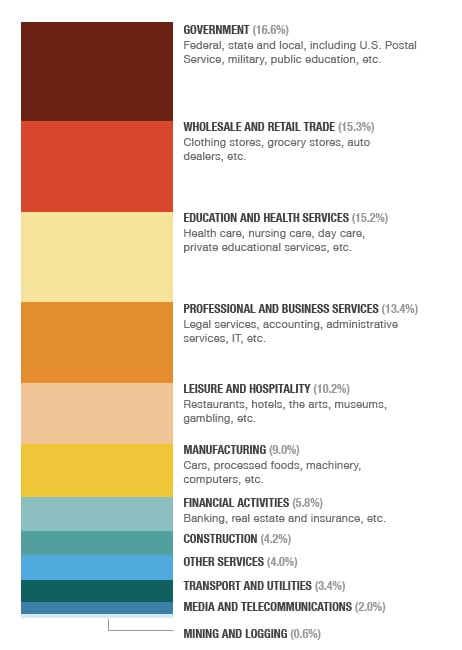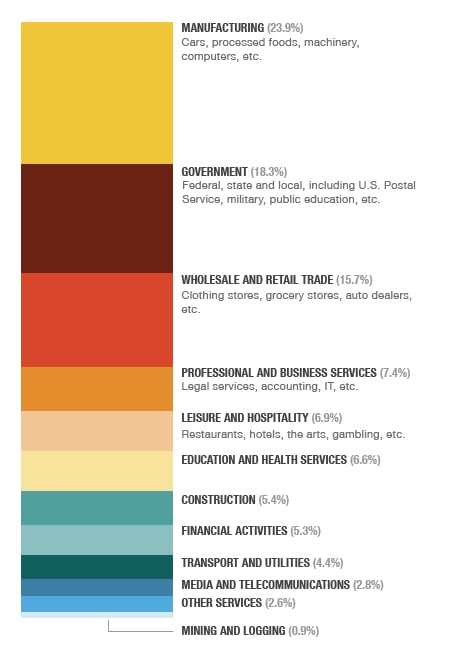Every day, the media covers hundreds of stories on jobs, income, unemployment, and the U.S. economy. But what happens when we step back and ask a few bigger, simpler questions: What do Americans do for a living? And in what way has the employment landscape changed over the last 30 years?
Planet Money has answered these questions with two graphs.
Jobs where people manufacture goods constitute significantly less of the total employment landscape. Americans still made a lot of stuff in 2012, but developments in technology have enabled factories to manufacture more goods using fewer workers.
Conversely, jobs where people perform services for others now account for a significantly higher percentage of total jobs. Large gains have come in education and health services. This won’t surprise most readers, given the fact that they constitute a large percentage of the U.S. economy.
Jobs in government, wholesale, and retail trade have remained relatively steady. Those sectors were 2 of the top 3 in both 1972 and 2012.
Some Final Notes On The Comparison
In absolute terms, the number of occupations in the U.S. has grown from 73 million in 1972 to 133 million now, mostly due to population growth. However, the percentage of Americans in the workforce is also greater now than it was 40 years ago (64% today versus 60% in 1972).
Over the years, some jobs have been re-categorized. New professions that didn’t previously exist (like social media managers) were thrown into the mix. But all in all, the 12 major categories listed in the charts above have remained consistent.
The Planet Money Team selected 1972 as the baseline year since that was the first year for which this form of “apples-to-apples” evaluation was possible based on BLS figures.
*The survey used to collect these data doesn’t include farm jobs (that’s why the big monthly jobs report is called “nonfarm payrolls.”) Farm jobs account for less than 1 percent of all jobs, according to the BLS.







